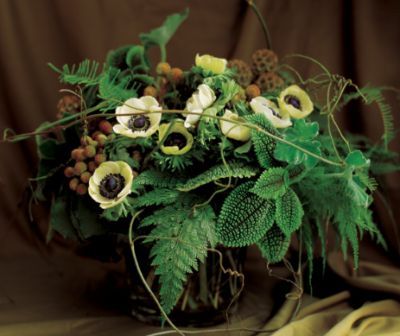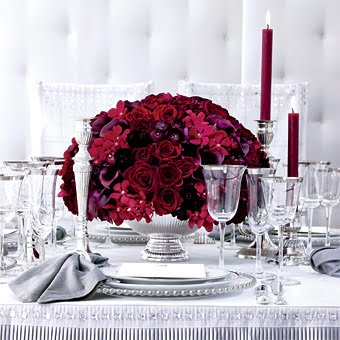So what accounts for the varying prices across the country and how do these costs compare to the Seattle area?
Well, several things affect the cost of your wedding flowers –
Availability
Dahlias are cheap in September because they are grown locally and they are in season. They are a dime a dozen at the farms around the Puget Sound. But try finding dahlias for your February wedding and it’s not so easy. They will have to be imported from somewhere in the Southern Hemisphere which gets me to my next point…
Distance from grow point
Anything that has to be imported automatically costs more than something grown locally. It’s entirely logical; now you are paying for the cost of transport, import taxes, fuel for trucks and airplanes etc. Most flowers used by florists in the US are imported from Canada, South America or Africa because those countries have a long growing season and warm climate (or in the case of Canada, large greenhouses!)
Style
The style and intricacy of an arrangement will also affect its cost. A more involved bouquet with lots of different floral elements and techniques such as wiring for delicate blooms such as orchids will require more labor than a hand tied bouquet of a single flower.
Cost of Doing Business
In my opinion, this is the primary reason that the same arrangement is priced differently in different part of the country. In addition to raw materials, a florist has to account for rent, labor, utilities, trucking, insurance and sales tax in her pricing and this cost can vary enormously across the country.
So where does Seattle fall in terms of floral pricing?
On the higher end. Seattle is an expensive city for property and this affects the price of rent for a shop or studio. We are also in a part of the country where, while the weather is generally mild, the growing season for flowers is short and outside of the summer months, most flowers have to be imported into the area.
But there are several ways to keep your costs lower!
- Choose in season flowers. Tulips in the Spring and dahlias in late summer are two common examples but both are gorgeous flowers that come in many different colors and styles.
- Choose simple, looser and smaller arrangements. The less wiring and labor involved with your bouquet, the less expensive it will be and it stands to reason that a smaller arrangement with fewer flowers will cost less than a large elaborate one.
- Don’t get married the week of Valentine’s Day or Mother’s Day. These two holidays are when flowers are most in demand but short in supply because of the time of year. The prices direct from the grower skyrocket and florists have to raise their pricing to cover the increased cost. So you get a lot less for your money than you would on any other day of the year.
- Tagged: cost, pricing, seattle wedding flowers
- |
- Comments Off on Reality Check Part 2
 Over the past couple of years, I have had many conversations with my brides that go something like this,
Over the past couple of years, I have had many conversations with my brides that go something like this,
Bride: I adore this bouquet I saw in Martha Stewart magazine. I love the peonies, the roses, the trailing vines…Can you do something like that?
Me: Of course. Now what’s your budget?
Bride: Oh, I don’t know. I want to keep costs minimal but I really want the flowers to look amazing.
Me: Ok, well that bouquet will probably cost around $350.
Bride: how much?????
And I sympathize. I really do. Until they start planning their wedding, most brides have never purchased flowers outside of the farmers market or the grocery store. They have no idea of the cost involved for the basic materials, time or labor that goes into creating a single bouquet. Flowers are rare, perishable and imported and those words never describe a cheap, mass produced item. They start out expensive and then they are hand crafted into bouquet or centerpiece or boutonniere.
I recently came across this article on Pink Blossom List, a blog for vendors in the wedding industry, that asked florists in different areas of the country how they would price three types of arrangements. Here’s an excerpt,
How much would this Martha Stewart bouquet cost in your city?




From Flower Divas to Soiree Floral, Studio Stems to A to Zinnias, this is what they would charge for this beautiful, marigold, grey, and soft green bouquet featuring ranunculus,freesia, mini succulent, berzilia, dusty miller and finished with vintage inspired seamstress ribbons.
How about a medium sized full, vintage inspired centerpiece like this one?

From California to Connecticut, Utah to Michigan, this is what florists would charge for this eco-green centerpiece of anemones, brown berzilia baubles, scabiosa pods, leather fern, sword fern, scented geranium and jasmine vines in a glass cylinder created by Lewis Miller of LMD Floral Events in NYC.

And what about a large, lush, lavish centerpiece like this one that appeared in Brides magazine?

It’s a classically styled centerpiece that would work for any season. The uniformity of the blooms and the near monochromatic color palette make a strong statement. This striking centerpiece uses a variety of deep red and dark plum-red flowers including deep red roses, reddish plum rananunculus, dark reddish plum mini callas, and red orchids. And the cost…?
Tomorrow I’ll discuss what accounts for the varying costs, where Seattle falls in the price range and what you can do to lower the cost of your wedding flowers. Stay tuned!





- Tagged: cost, pricing, wedding flowers
- |
- 2 Comments
Previous posts
Friends
For all inquiries please contact us at
Categories
- Aisle Decor
- altar arrangements
- Bouquet
- Boutonniere
- Centerpieces
- ceremony decor
- Corsage
- Design Sponge
- Diy ideas
- E-Design Service
- event design
- floral design
- Flower School
- garden roses
- Home
- inspiration
- Modern Decor
- Once Wed
- press
- Prop styling
- Seattle Bride
- Seattle Metropolitan Bride & Groom
- Style Me Pretty
- Styled Inspiration Shoot
- vintage centerpiece
- vintage decor
- vintage props
- Wedding Chicks
- Weddings